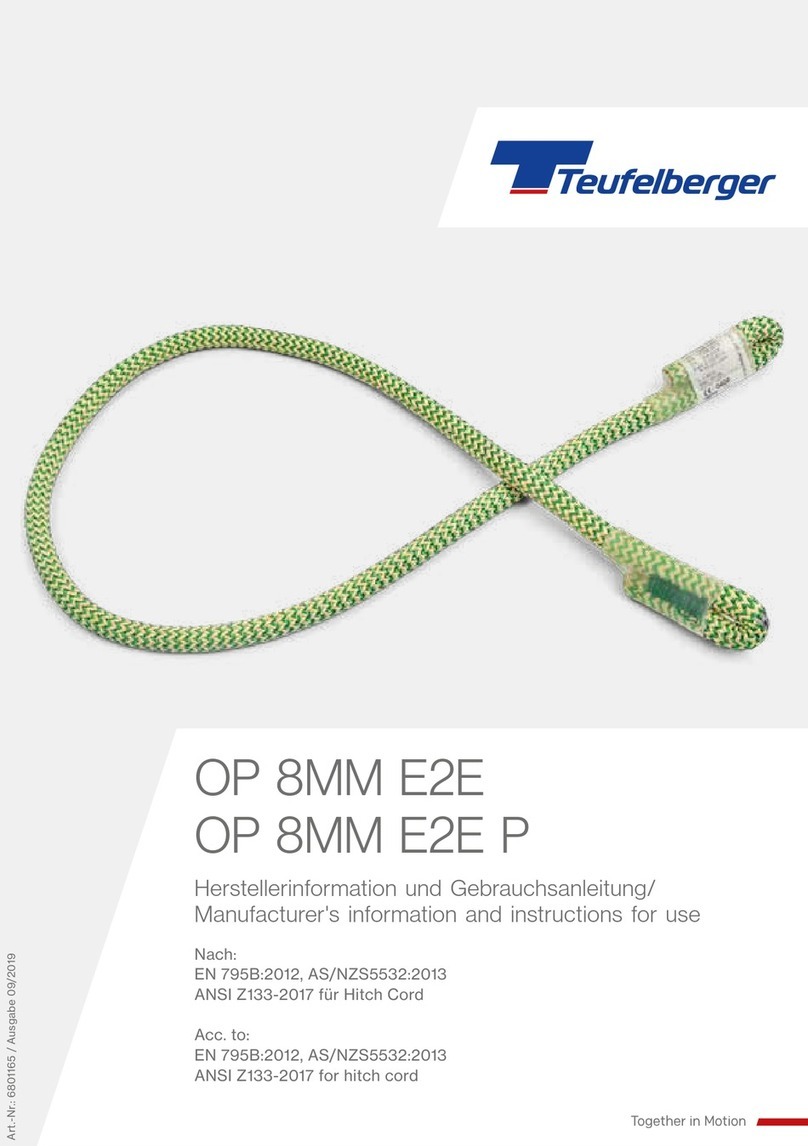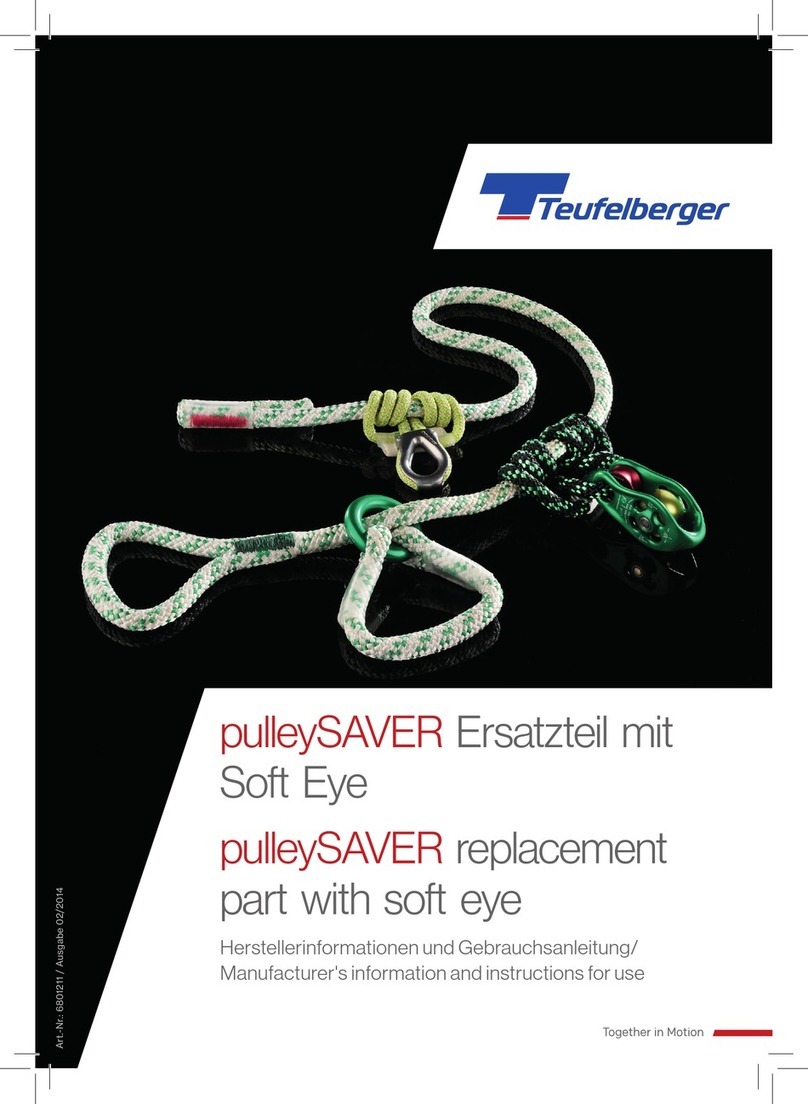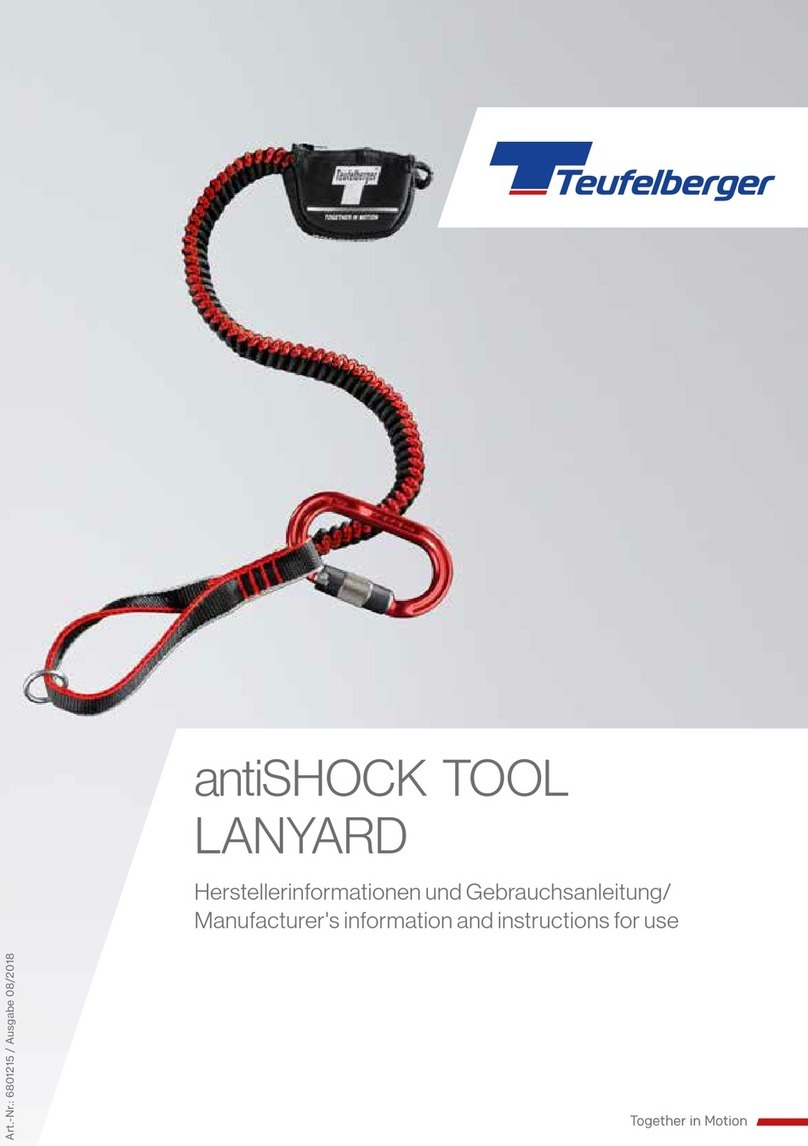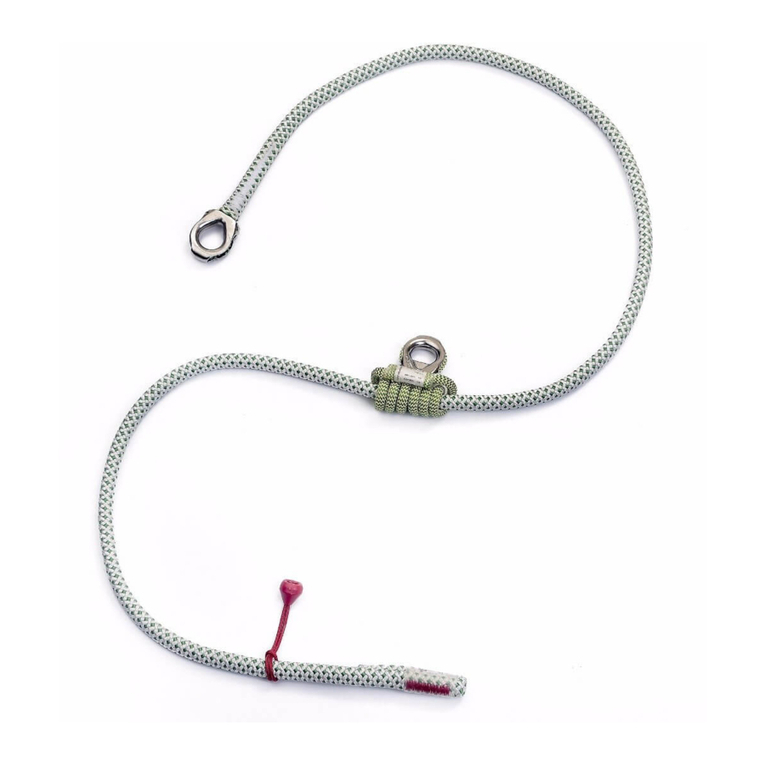
4
regulation (EU) 2016/425 on Personal
Protective Equipment (PPE). This prod-
uct has been developed according to
a risk analysis taking into account the
special requirements of arborists. The
product complies with EN813:2008
and EN358:1999 as well as with AS/
NZS1891.1:2007. Testing was performed
with a test mass of 100 kg as given in
the standard. Additionally, the rope
bridge attachment point was tested
dynamically with a test mass of 120 kg.
The product complies with ANSI Z133-
2017 for arboricultural op-erations with
ASTM F887-16 and with CSA Z259.1-05.
The product does not comply with any
other standards.
If the system is sold or passed on to
another user, the instructions for use
must accompany the equipment. If
the system is transferred to another
country, it is the responsibility of the
seller/previous user to ensure that the
instructions for use are in the correct
language for that country and that the
requirements of relevant national stand-
ards are met.
TEUFELBERGER is not responsible
for any direct, indirect, or incidental
consequences/damage occurring dur-
ing or after the use of the product and
WARNING
The use of our products can be dangerous. Our products may only be used for their
intended purpose. They must particularly not be used for lifting as specified in EU
directive 2006/42/EC. The customer is responsible that the user has been trained
in the safe use of the product and in accompanying safety precautions.Be aware
of the fact that the product can cause damage if wrongly used, stored, cleaned
or overloaded.Check national safety regulations, industry recommendations and
standards for local requirements. TEUFELBERGER®and 拖飞宝®are internationally
registered trademarks of the TEUFELBERGER Group.
WARNING
This product is a work positioning belt
and sit harness, specifically designed
for arborists.
It must not be used to arrest a fall.
This product may be utilized only by
persons trained in its safe use and
having the relevant knowledge and
skills, or under the direct supervision
of such persons. Whenever possible,
the equipment should be provided per-
sonally to the user. It may be used only
withinthespeciedlimitedscopeof
useandforthedenedpurpose.
Prior to using this product, read this
document thoroughly, make sure you
understand the instructions for use,
and keep them with the product, to-
getherwiththeinspectionsheet!Keep
instructions for future reference. In
addition, check national safety regu-
lations regarding personal protective
equipment (PPE) for arborists’ use for
local requirements.
Attention! Consult AS/NZS 1891.4 for
guidance on selection, use and main-
tenancematters!
The product accompanied by this set
of instructions is type-examined and
CE-marked to state conformity with
GENERAL


































